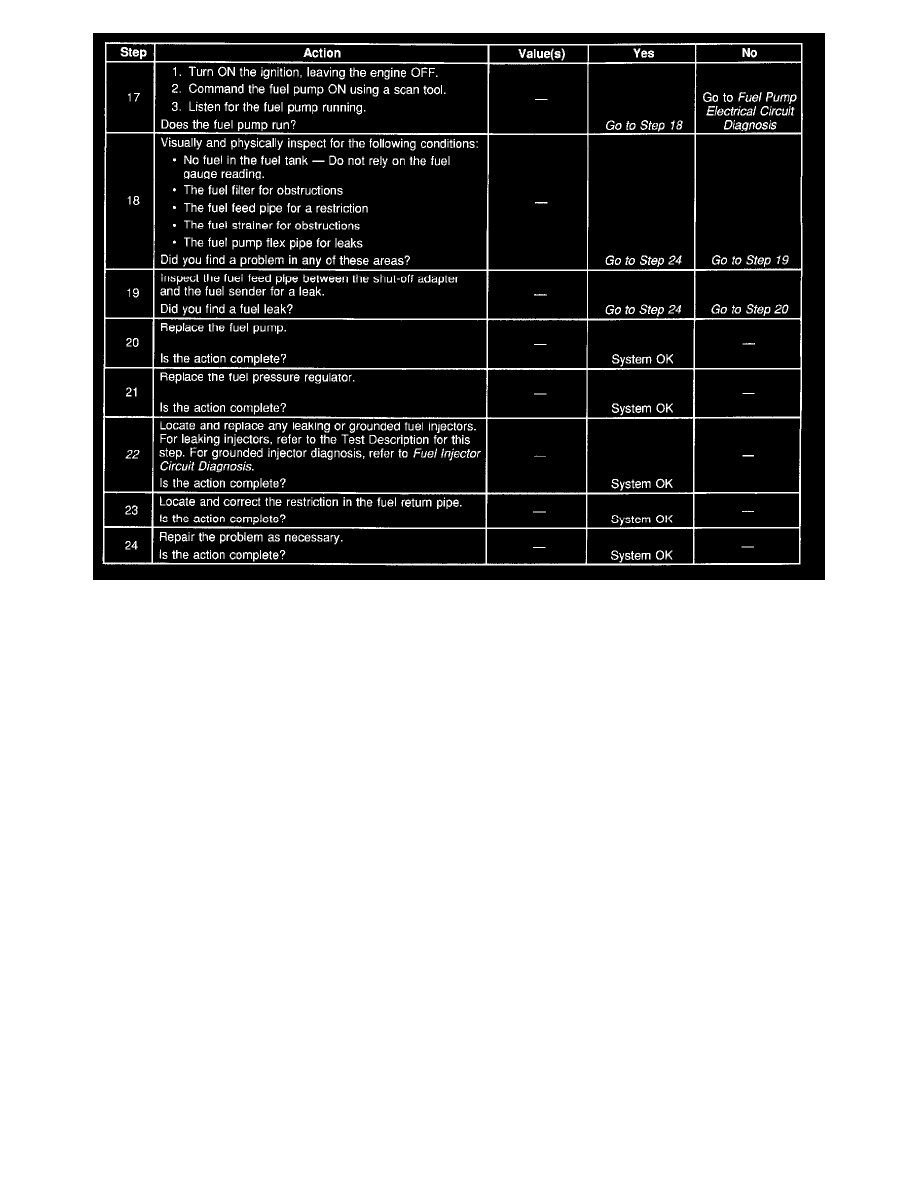K Yukon/Denali 4WD V8-5.7L VIN R (2000)

Diagnostic Chart (Part 4 Of 4)
CIRCUIT DESCRIPTION
When you turn ON the ignition, the Vehicle Control Module (VCM) energizes the fuel pump relay which powers the fuel pump ON. The pump
remains ON as long as the engine is cranking or running and the VCM receives reference pulses. If there are no reference pulses, the VCM shuts the
fuel pump OFF within 2 seconds after the ignition was switched to the ON position or if the engine stops. The VCM also turns ON the fuel pump for 2
seconds when you turn OFF the ignition.
An electric fuel pump pumps the fuel through an in-line filter to the fuel meter body assembly. The pump attaches to the fuel level sender assembly
inside of the fuel tank. The fuel pump provides fuel pressure above what is needed by the fuel injectors. The pressure regulator keeps the fuel available
to the injectors at a regulated pressure. Unused fuel returns to the fuel tank by the fuel return pipe.
TEST DESCRIPTION
The numbers below refer to the step numbers on the diagnostic table.
2. When the ignition is ON and the fuel pump is running, the fuel pressure indicated by the fuel pressure gauge should read 414- 455 kPa (60-66 psi)
. The spring pressure inside the fuel pressure regulator controls the fuel pressure.
3. A fuel system that drops more than 34 kPa (5 psi) in 10 minutes has a leak in one or more of the following areas:
^
The fuel pump check valve
^
The fuel pump flex pipe
^
The valve or valve seat within the fuel pressure regulator
^
The fuel injectors
^
A fuel pipe
4. A fuel system that drops more than 14 kPa (2 psi) in 10 minutes after being relieved to 69 kPa (10 psi) indicates a leaking fuel pump check valve.
5. Fuel pressure that drops-off during acceleration, cruise, or hard cornering may cause a lean condition. A lean condition can cause a loss of power,
surging, or misfire. You can diagnose a lean condition using a scan tool. If an extremely lean condition occurs, the heated oxygen sensors will stop
toggling. The heated oxygen sensor output voltages will drop below 300 mV. The fuel injector pulse width will increase.
IMPORTANT: Make sure the fuel system is not operating in the Fuel Cut-Off Mode. This can cause false indications by the scan tool.
6. When you open the throttle quickly, the manifold pressure increases (low vacuum). The fuel pressure regulator increases the fuel pressure as the
engine vacuum drops in order to compensate for engine load.
11. A rich condition may result from the fuel pressure being above 455 kPa (66 psi). A rich condition may cause a DTC to set. Driveability conditions
